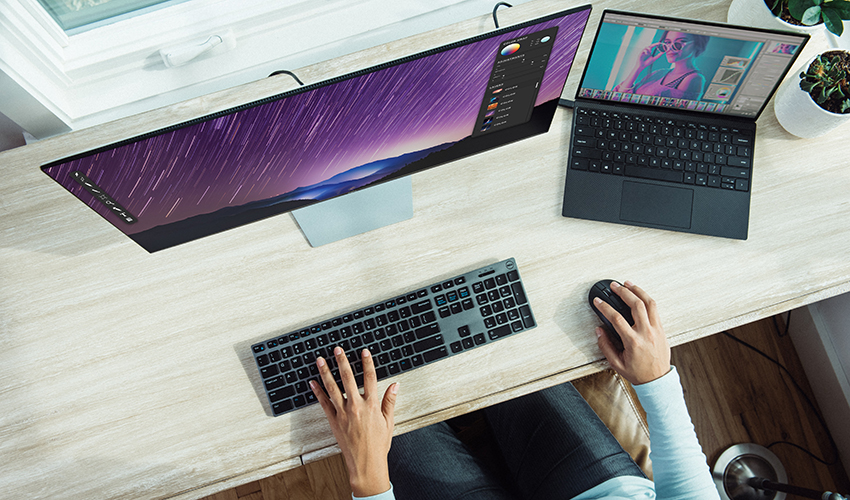Professors share tips on healthy tech usage during pandemic

Easy changes to your routine can help you adapt to working and learning remotely
During the COVID-19 pandemic, technology has proved to be a double-edged sword. It’s made it possible for us to work and learn remotely to reduce the spread of the virus, but it can also be a pain in the neck ... literally.
Gazing at computer and phone screens too long produces common side effects, including neck, shoulder and back pain and eye strain. We turned to San Francisco State University Professors of Recreation, Parks, Tourism and Holistic Health Erik Peper and Richard Harvey — co-authors of the new book “Tech Stress: How Technology Is Hijacking Our Lives, Strategies for Coping, and Pragmatic Ergonomics” — for tips on avoiding issues associated with technology overconsumption.
Get up and move
About every 20 minutes, stand up and move your body. Consider doing a quick dance to a favorite song or taking a walk around the block (don’t forget to wear your face covering and stay six feet from people outside your household). “It will feel silly, yet actively moving is one of the quickest energizers,” said Harvey. Stretching and moving will also relax those muscles that you tense constantly when working at a desk, he added.
Think you’ll forget to take a break? The free Stretch Break app is a great tool to remind you.
Blink and look far off
Our blinking rate significantly decreases while looking at a screen, which contributes to eye strain, Peper explains. A good way to address this is by blinking every time you click on a hyperlink or after you finish typing a paragraph.
He also says it’s important to relax eye muscles from time to time. How to do that? Look far ahead. “Looking out into the distance disrupts constant near-focus muscle tension in the eyes,” Peper said. “It may not be obvious, but this exercise can ease those muscles tremendously.”
Avoid phones right before bed
Many people use their phones before bed, which can make it more difficult to sleep. Harvey recommends taking a break from your phone one hour or more before bedtime.
“Electronic screens emit blue light, which can send a signal to your brain that it’s daytime,” he said. “This suppresses your body’s production of the hormone melatonin, which helps your body know when it’s time to sleep.”
Harvey adds that reading or watching content that is thought-provoking or anxiety-inducing may stimulate the mind and promote wakefulness.
Optimize ergonomics
Make sure your computer setup is ergonomically friendly. Your desktop keyboard should be positioned so that your forearms are a few inches above your waist. The top of your screen should be around eyebrow level, which should naturally cause your eyes to look slightly downward at the screen.
Unfortunately, using a laptop or a phone causes people to look down in an unhealthy way that can make them slouch and induce neck or back pain. “The solution is to get an external keyboard along with a laptop stand,” Peper said. “Getting an external monitor can also help.”
Take a deep breath
Breathe deeply and slowly to restore a natural rhythm. As we work, we tend to breathe more shallowly, which increases anxiety and our heart rate. To counteract this, take three deep breaths for five seconds, then exhale very slowly for six seconds.
Give undivided attention
Phones have become so ingrained in our lives that we use them constantly throughout the day. Harvey stresses that people should make a conscious effort to limit phone usage, especially when socializing.
“When we respond to a phone notification during a Zoom hangout with friends or while talking to our family members, people may feel dismissed,” he said. “This can increase a sense of social isolation, so give people your total attention when interacting with them.”
Looking for more tips? Learn more about Peper and Harvey’s new book on the publisher’s website.